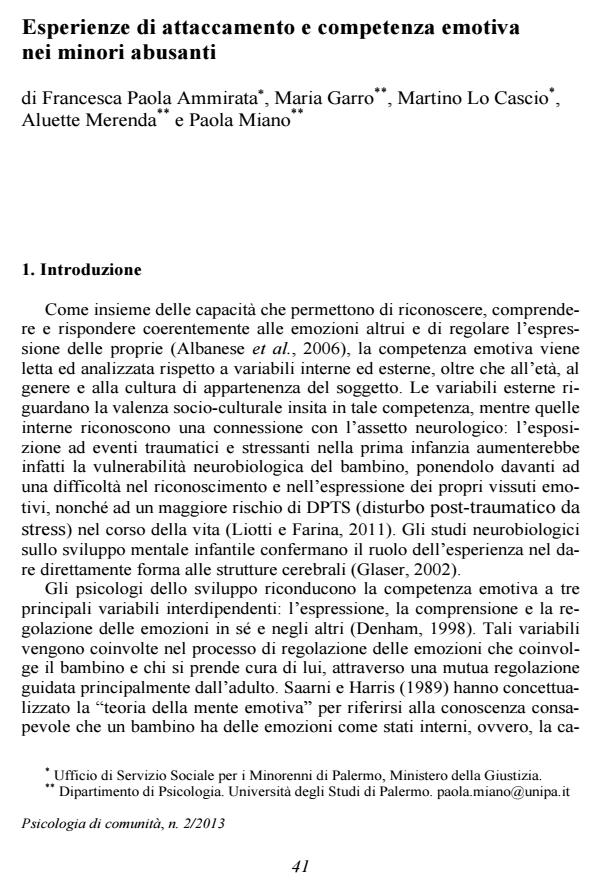Attachment experiences and emotional competence in young sex offenders
Journal title PSICOLOGIA DI COMUNITA’
Author/s Francesca Paola Ammirata, Maria Garro, Martino Lo Cascio, Aluette Merenda, Paola Miano
Publishing Year 2014 Issue 2013/2
Language Italian Pages 6 P. 41-46 File size 30 KB
DOI 10.3280/PSC2013-002005
DOI is like a bar code for intellectual property: to have more infomation
click here
Below, you can see the article first page
If you want to buy this article in PDF format, you can do it, following the instructions to buy download credits

FrancoAngeli is member of Publishers International Linking Association, Inc (PILA), a not-for-profit association which run the CrossRef service enabling links to and from online scholarly content.
Interpersonal relationships allow children to learn how to recognise emotional experiences, as well as how to use socially acceptable manners. Among different variables explaining the conduct of young offenders, the lack of emotional competence and an insecure attachment bond are particularly relevant. The assessment of personal history and the Adult Attachment Interview of two users of the Minors Social Service Office (USSM) of Palermo, accused of a sexual offense, has highlighted a lack of intimacy in relationships, compensated in a dysfunctional way by an abusive conduct. The analysis of these two cases is supported by including the description of transformative objectives of the psychosocial intervention oriented to young offenders.
Keywords: Young offenders, attachment, emotional competence, sexual abuse, close relationships, psychosocial intervention
Francesca Paola Ammirata, Maria Garro, Martino Lo Cascio, Aluette Merenda, Paola Miano, Esperienze di attaccamento e competenza emotiva nei minori abusanti in "PSICOLOGIA DI COMUNITA’" 2/2013, pp 41-46, DOI: 10.3280/PSC2013-002005